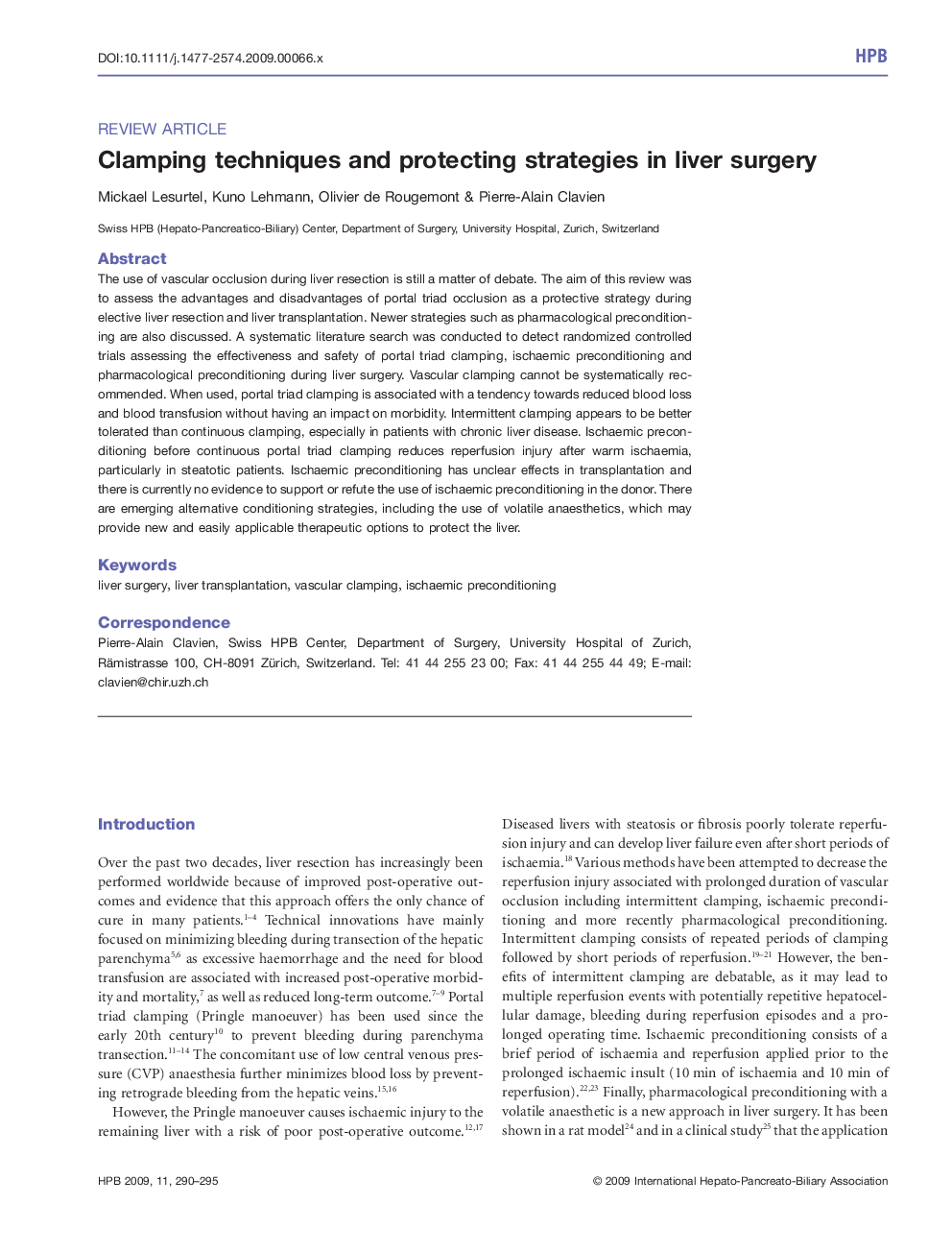| کد مقاله | کد نشریه | سال انتشار | مقاله انگلیسی | نسخه تمام متن |
|---|---|---|---|---|
| 3269843 | 1208169 | 2009 | 6 صفحه PDF | دانلود رایگان |
عنوان انگلیسی مقاله ISI
Clamping techniques and protecting strategies in liver surgery
دانلود مقاله + سفارش ترجمه
دانلود مقاله ISI انگلیسی
رایگان برای ایرانیان
کلمات کلیدی
موضوعات مرتبط
علوم پزشکی و سلامت
پزشکی و دندانپزشکی
غدد درون ریز، دیابت و متابولیسم
پیش نمایش صفحه اول مقاله

چکیده انگلیسی
The use of vascular occlusion during liver resection is still a matter of debate. The aim of this review was to assess the advantages and disadvantages of portal triad occlusion as a protective strategy during elective liver resection and liver transplantation. Newer strategies such as pharmacological preconditioning are also discussed. A systematic literature search was conducted to detect randomized controlled trials assessing the effectiveness and safety of portal triad clamping, ischaemic preconditioning and pharmacological preconditioning during liver surgery. Vascular clamping cannot be systematically recommended. When used, portal triad clamping is associated with a tendency towards reduced blood loss and blood transfusion without having an impact on morbidity. Intermittent clamping appears to be better tolerated than continuous clamping, especially in patients with chronic liver disease. Ischaemic preconditioning before continuous portal triad clamping reduces reperfusion injury after warm ischaemia, particularly in steatotic patients. Ischaemic preconditioning has unclear effects in transplantation and there is currently no evidence to support or refute the use of ischaemic preconditioning in the donor. There are emerging alternative conditioning strategies, including the use of volatile anaesthetics, which may provide new and easily applicable therapeutic options to protect the liver.
ناشر
Database: Elsevier - ScienceDirect (ساینس دایرکت)
Journal: HPB - Volume 11, Issue 4, June 2009, Pages 290-295
Journal: HPB - Volume 11, Issue 4, June 2009, Pages 290-295
نویسندگان
Mickael Lesurtel, Kuno Lehmann, Olivier De Rougemont, Pierre-Alain Clavien,